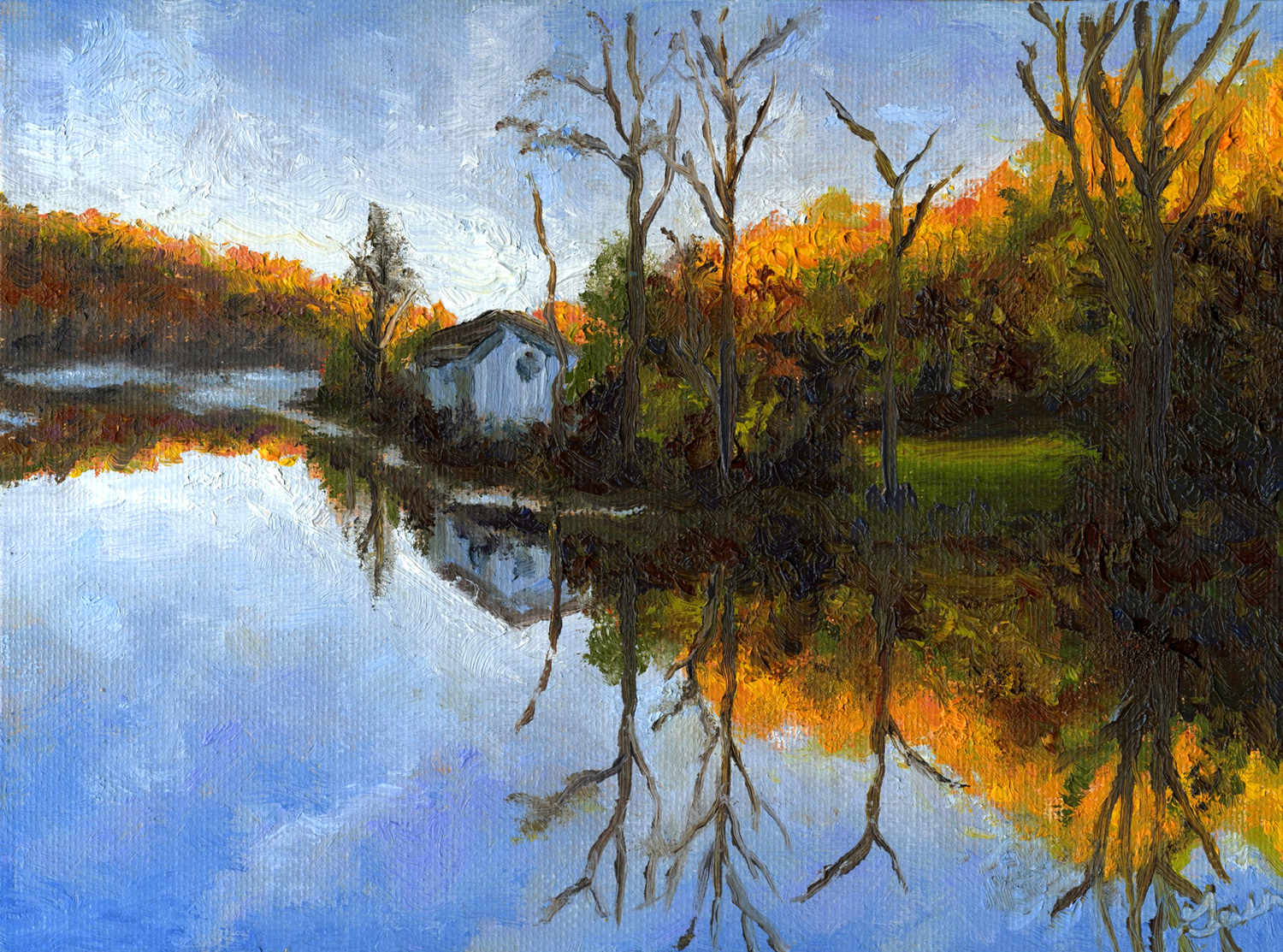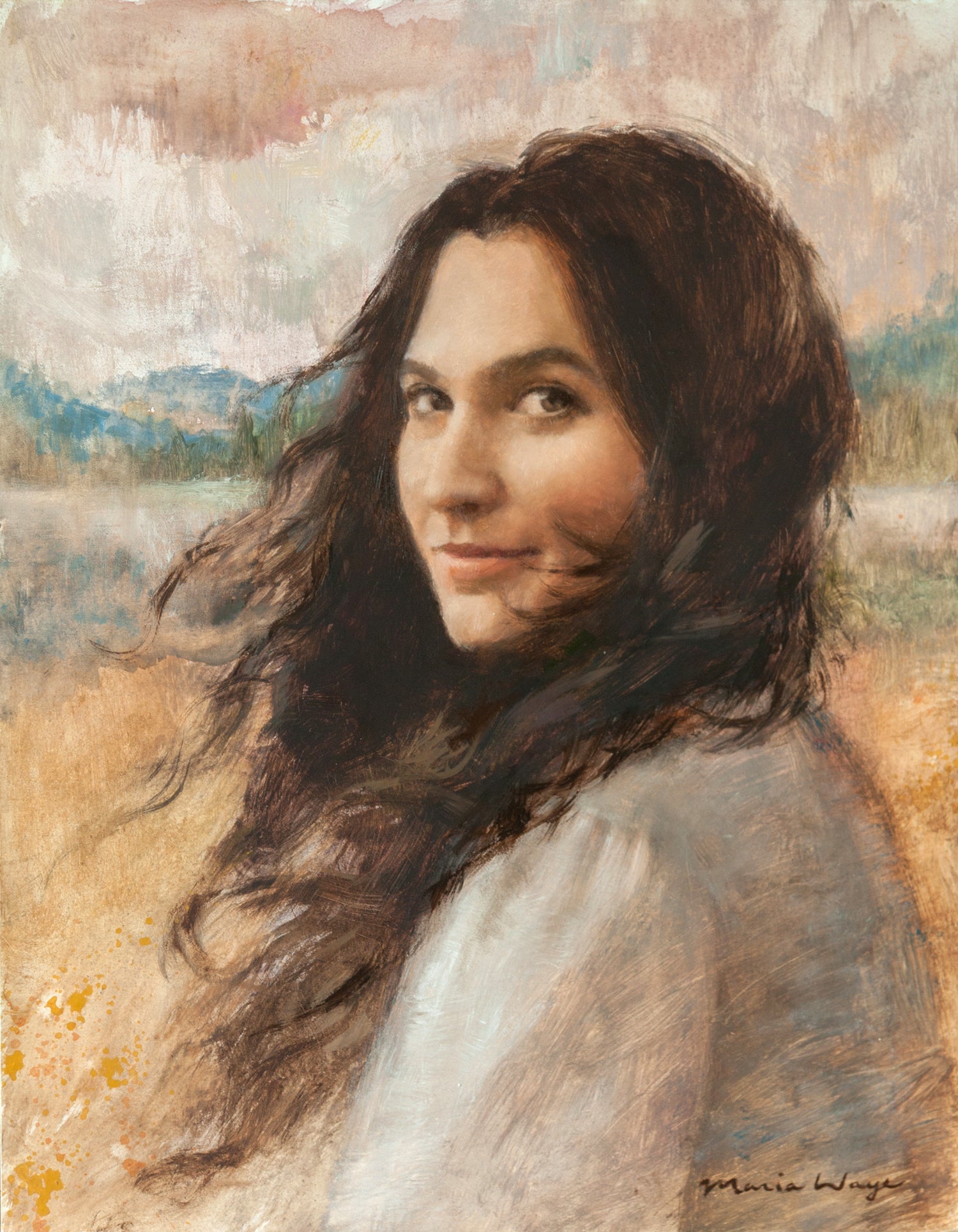Premium High-End Oil Paintings for Sale Now
Premium High-End Oil Paintings for Sale Now
Blog Article
Checking out Everything About Oil Paints: A Guide to Understanding Their Beauty and Value
Oil paints have mesmerized audiences for centuries, offering a glimpse right into the creative mastery of various periods. Their abundant background is intertwined with innovative techniques and extensive emotional expression. Understanding the materials and approaches behind these artworks can enhance recognition. Furthermore, the market for oil paints provides chances for investors and enthusiasts alike. As one discovers this interesting globe, the inquiry emerges: what makes an oil painting truly valuable?
The History of Oil Painting: A Trip Through Time
Although oil paint has roots that go back to ancient times, it truly prospered throughout the Renaissance, when musicians uncovered its flexibility and abundant color possibility. Early instances can be traced to the 7th century, with strategies evolving significantly throughout cultures. The tool became famous in Northern Europe in the 15th century, particularly with the jobs of musicians like Jan van Eyck, that originated its use for thorough realism and lively tones. This period marked a separation from tempera paints, enabling greater depth and appearance. As oil painting spread, it affected numerous musicians, resulting in work of arts by renowned figures such as Leonardo da Vinci and Rembrandt. The medium's heritage proceeds, forming the art world well into modern-day times.
Recognizing Oil Paints: Materials and Techniques
As musicians check out the globe of oil paints, they come across a varied range of materials and strategies that specify this tool. The key elements of oil paint consist of pigments, which give shade, and drying out oils, such as linseed, that bind the pigments and facilitate application. Various additives can customize the paint's structure and drying time, improving versatility. Techniques like glazing, where clear layers are accumulated, and impasto, which involves applying thick paint, allow for different visual effects. Additionally, using brushes, palette knives, and even fingers can create distinct structures and surfaces. Recognizing these products and methods enables artists to fully reveal their imagination and achieve the wanted influence in their artwork.
The Role of Color in Oil Paints
Color plays an essential function in oil paints, affecting both visual allure and emotional vibration. Recognizing color theory basics, including the relationships in between tones, can improve a musician's capacity to communicate state of mind and environment. Additionally, understanding shade mixing techniques enables higher deepness and richness in a paint's palette.

Color Concept Essential
Recognizing shade theory is important for musicians functioning with oil paints, as it forms the structure for producing visually engaging and unified compositions. Shade concept includes the study of how shades engage, the color wheel, and the relationships in between main, additional, and tertiary colors. Musicians use corresponding colors to boost contrasts and create prime focus, while analogous shades promote unity and cohesiveness within a piece. In addition, the ideas of cozy and trendy colors affect the assumption of depth and room in a painting. Comprehending these concepts enables musicians to manipulate color efficiently, directing the visitor's eye and communicating their designated message. Mastery of color concept inevitably enriches a musician's capability to share emotions and concepts via their work.
Emotional Effect of Shade
The emotional impact of color in oil paints plays a crucial function in how customers perceive and link with art work. Colors stimulate particular sensations and moods, influencing the visitor's emotion. As an example, warm shades like oranges and reds can create a sense of heat and power, while great tones such as blues and greens typically stimulate calmness or self-questioning. Artists purposefully choose color combinations to improve narrative aspects, assisting the target market's emotional journey. The saturation and contrast of colors further amplify these impacts, attracting interest and producing emphasis. Ultimately, the interplay of colors in oil paintings not only improves their aesthetic charm however likewise offers as a powerful medium for emotional expression, enhancing the customer's experience and analysis.
Shade Combining Techniques
While lots of elements of oil painting add to the general structure, grasping color mixing methods is crucial for attaining wanted results and deepness. Color blending can be come close to with various approaches, including the additive and subtractive procedures. Additive mixing involves incorporating colors of light, while subtractive blending depends on pigments, where shades blend to develop brand-new shades. Musicians frequently make use of a restricted palette to develop harmonious works, understanding the connections between primary, second, and tertiary shades. Techniques such as glazing and scumbling additionally enhance depth and brightness. By skillfully blending colors, a musician can stimulate emotions, develop centerpieces, and attain a sense of realistic look, ultimately boosting the painting's emotional and visual impact.
Famous Oil Painters and Their Iconic Functions

Famed for their mastery of shade and strategy, oil painters have produced several of the most popular artworks in background. Renowned artists like Vincent van Gogh mesmerized target markets with his emotive brushwork in "Starry Night," while Claude Monet's "Perception, Daybreak" prepared for Impressionism. Leonardo da Vinci's "Mona Lisa" continues to be a long-lasting sign of creative wizard, showcasing his ability in capturing human expression. Meanwhile, Rembrandt's "The Evening Watch" shows his cutting-edge use of light and darkness. Various other significant numbers consist of Pablo Picasso, that changed modern-day art with his bold experimentation in works like "Les Demoiselles d'Avignon," and Georgia O'Keeffe, whose vivid representations of blossoms and landscapes helped specify American innovation. Each artist's distinct style contributed considerably to the oil paint landscape.
Exactly how to Examine the Quality of an Oil Painting
Evaluating the high quality of an oil paint includes a cautious evaluation of craftsmanship methods, in addition to an analysis of color and structure. Observing brushwork, layering, and the application of paint can expose the artist's skill degree. In addition, the interaction of shades and the general setup of aspects contribute substantially to the painting's visual value.
Assessing Workmanship Techniques
A meticulous evaluation of craftsmanship methods is vital for identifying the top quality of an oil painting. Critics ought to initially take a look at the application of paint; thick, textured brushstrokes might suggest a knowledgeable hand, while overly consistent applications could suggest a lack of depth. oil paintings for sale. The layering strategy is also essential; the presence of lusters and varied density can enhance brightness and intricacy. Additionally, the top quality of the products utilized, such as the canvas and pigments, plays a significant function in sturdiness and total aesthetic. Interest to information in elements like edges and changes between colors mirrors the musician's commitment to their craft. Eventually, these strategies contribute to the paint's emotional influence and market value, offering as indicators of the musician's skill and intent
Assessing Color and Make-up
While assessing the top quality of an oil painting, one need to concentrate on the interplay of color and structure, as these components are basic to the artwork's total influence. Shade selections can evoke emotions and establish state of mind; consequently, the musician's palette ought to be checked out for consistency and contrast. A healthy composition guides the customer's eye and creates a sense of unity. Artists commonly employ methods like the policy of thirds or leading lines to boost visual rate of interest. In addition, the use of light and shadow can add depth, enhancing the three-dimensionality of the paint. Ultimately, an effective oil painting marries shade and make-up, involving the audience and inviting a much deeper recognition of the musician's vision and strategy.
Taking care of and Preserving Oil Paintings
Appropriate care and preservation of oil paints is crucial for keeping their stability and durability. To protect these artworks, it is crucial to show them away from straight sunlight, which can cause fading and staining. Preserving a steady atmosphere with regulated temperature and humidity more aids in avoiding damage. Cleansing need to be done delicately making use of a soft, dry cloth, staying clear of any type of harsh chemicals that could hurt the paint or varnish. Regular assessments for indicators of deterioration, such as splitting or flaking, are a good idea. When storing or transporting oil paints, correct cushioning and framing are necessary to stay clear of physical injury. Eventually, persistent care contributes to the aesthetic allure and value of oil paintings with time.
The Marketplace for Oil Paintings: Accumulating and Spending
Comprehending the market characteristics for oil paints is crucial for investors and collection agencies alike. The worth of these art more info work is influenced by numerous factors, consisting of the musician's reputation, historic value, and current patterns. Enthusiasts commonly look for pieces that reverberate directly while considering potential gratitude in worth. Galleries and auctions act as key venues for trading, with rates varying based upon demand and rarity. Spending in oil paints requires study into the market, as well as an understanding of credibility and provenance. In addition, emerging musicians might offer chances for significant returns, while established names can regulate high costs. On the whole, a strategic method to collecting can generate both visual satisfaction and economic incentives.

Often Asked Inquiries
What Are the Environmental Effects of Oil Paint Products?
The ecological influences of oil painting materials include the release of unstable organic compounds (VOCs), unsafe waste generation, and resource removal for pigments. These elements add to contamination and eco-friendly deterioration, increasing worries amongst eco aware musicians and customers.
Just How Do Various Canvases Influence Oil Paint Results?
Different canvases affect oil painting results significantly. Surface area, structure, and absorbency high quality can alter paint application, drying out times, and color vibrancy. Musicians commonly choose specific canvases to achieve desired effects and enhance their imaginative expression.
Can Oil Paintings Be Restored if Damaged?
Oil paints can indeed be recovered if damaged. Expert conservators utilize numerous techniques to repair tears, tidy surface areas, and address discoloration, guaranteeing that the artwork retains its original charm and worth for future generations.
What Are the Indications of an Original Oil Paint?
The indications of an original oil paint consist of noticeable brush strokes, texture variants, and an uneven canvas weave (oil paintings for sale). In addition, credibility may be validated via provenance, trademarks, and the presence of a varnish layer special to oil tools
How Has Modern Technology Influenced Modern Oil Painting Techniques?
Modern technology has actually considerably influenced contemporary oil paint strategies by presenting digital tools for planning, improved materials for texture and longevity, and online systems for marketing and sharing art, therefore increasing musicians' creative possibilities and target market get to. Oil painting has roots that date back to old times, it absolutely grew during the Renaissance, when musicians discovered its adaptability and rich shade capacity. The emotional impact of shade in oil paints plays a vital role in exactly how audiences connect and regard with art work. While many aspects of oil paint add to the total make-up, understanding color mixing strategies is crucial for achieving desired results and deepness. Assessing the quality of an oil painting entails a cautious assessment of craftsmanship strategies, as well as an analysis of shade and composition. While examining the quality of an oil painting, one need to concentrate on the interaction of shade and make-up, as these components are fundamental to the artwork's overall impact.
Report this page